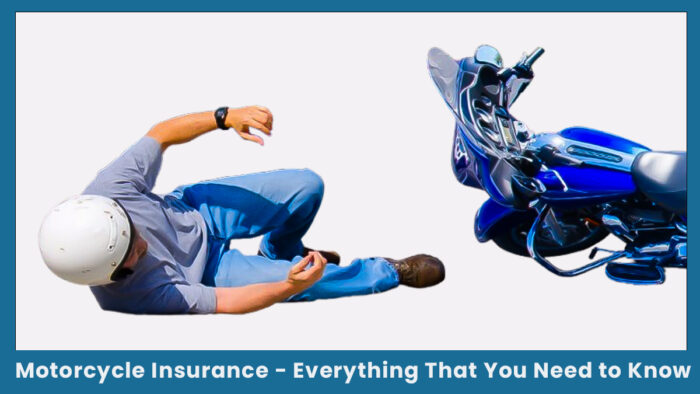Motorcycle Insurance – Whether you love riding for fun or you just need a way to move around town, owning a motorcycle can be exciting. But just like a car, your bike needs insurance to keep you, your passengers, and your bike protected. Hence it is a wise financial decision if you explore everyting that you will need to know about motorcycle insurance.

For starters, if you own a motorcycle, many states wants to ensure that you have a liability coverage plan. To keep you from damaging other people without having a means to cover up the expenses. Like auto insurances, motorcycle insurance is a smart move if you have a motorcycle and you really want to save on future emergencies.
Minimum Requirements for Motorcycle Insurance
Most states require motorcycle riders to have liability insurance. This type of coverage pays for injuries or damage you cause to others in an accident. The minimum amount you need is usually the same as the car insurance rules in your state. For example, Florida also expects you to have at least $10,000 in medical benefits. This can come from your health plan.
But we think it’s a good idea to go beyond the minimum. If you’re in a serious accident and get sued, the minimum coverage may not be enough. You could end up paying from your pocket. Also, make sure your coverage includes your passenger. In some states, you need to add that separately.
Some states also require uninsured or underinsured motorist coverage. This helps pay your medical bills if someone hits you and doesn’t have enough insurance. Sometimes it also covers damage to your bike, but you may need to buy that part separately.
Extra Protection You Can Choose
Just like car insurance, motorcycle insurance comes with other options that give you more protection if you want it. Below are some additional protection that you can choose when insuring your bike.
- Collision coverage: Pays for damage to your bike if you crash into another car or object. You’ll need to pay a part of the cost first, called a deductible.
- Comprehensive coverage: Covers your bike if it’s stolen or damaged by something other than a crash, like fire or animals.
- Medical payments (MedPay): Pays for medical bills if you or your passenger get hurt in an accident. It doesn’t cover lost income or other costs, but it’s useful if you don’t have health insurance.
- Personal injury protection (PIP): Pays medical bills for you, your passenger, or a pedestrian, no matter who caused the accident. Some states don’t allow this for motorcycles, and not all companies offer it.
Optional Add-Ons You Might Like
Some companies offer more coverage for things riders often need:
- Trip interruption coverage: Pays for hotel, food, or transport if your bike breaks down far from home.
- Custom parts and accessories coverage: If you’ve added things like chrome, saddlebags, or upgraded seats, this coverage protects them. Basic plans may only cover up to $3,000, but you can increase it if needed.
- Trailer coverage: Protects a trailer you use to carry your bike. Coverage is usually up to $7,500.
- Roadside assistance: Helps if your bike breaks down. It covers towing and simple repairs at the scene.
Motorcycle Insurance Discounts
Many insurance companies offer discounts that can help you save money. While these discounts may vary by provider, here are some common ways you might lower your premium:
- Buy another type of policy, like auto or home insurance, from the same company
- Keep a clean driving record
- Insure more than one motorcycle with the same insurer
- Complete a certified motorcycle safety or rider training course
- Join a motorcycle riders group or organization
- Ask if you qualify for a mature rider discount, especially if you are over 55 or have been riding for many years
What Happens if Your Bike is Stolen or Totaled?
It’s important to know how your motorcycle insurance will pay out if your bike is stolen or severely damaged. There are three common settlement types:
- Actual Cash Value: This pays what your motorcycle is currently worth, after subtracting for depreciation and your deductible.
- Stated Amount: You choose the amount the policy will pay if your bike is damaged or lost. The payout is based on that value, but it is not guaranteed.
- Agreed Value: You and the insurer agree on a fixed value for your motorcycle when you buy the policy. If something happens to your bike, that amount is paid without subtracting a deductible. This option is often used for classic or customized motorcycles.
Where to Buy Motorcycle Insurance
Most of the major auto insurance companies also offer motorcycle insurance. Some companies may allow you to add motorcycle coverage to an existing car insurance policy. Others offer it as a separate policy. Availability and policy details can vary depending on your state, so it’s a good idea to compare options.
You can buy a motorcycle insurance policy directly from well-known insurance companies that offer coverage tailored for riders. So, you can buy motorcycle insurance from several sources, depending on your preference and budget. Here are the main places to consider:
- Progressive
- GEICO
- State Farm
- Allstate
- Nationwide
Before you buy, make sure to compare policies for coverage types (like liability, collision, comprehensive), limits, and deductibles. Also, ask about discounts for safe driving, bundling with other insurance policies, or taking a motorcycle safety course.



